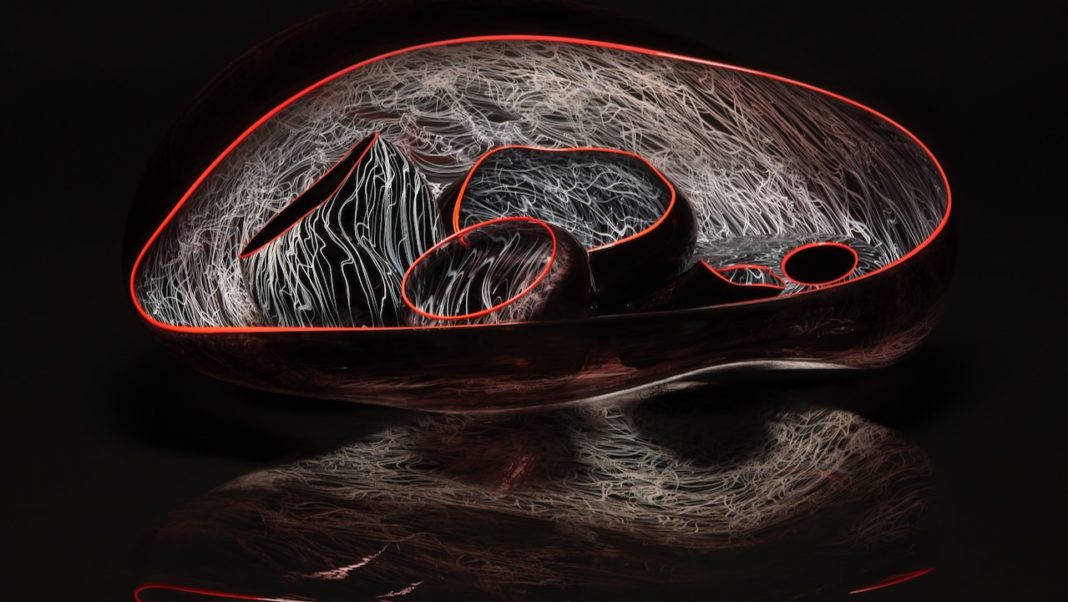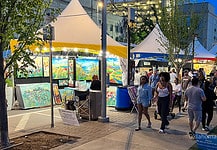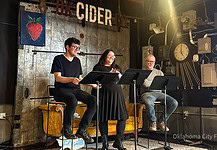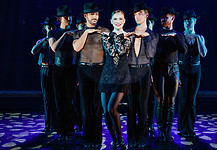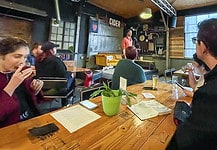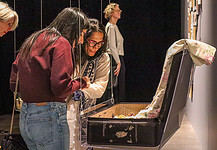Last Updated on June 18, 2022, 11:18 AM | Published: June 16, 2022
OKLAHOMA CITY (Free Press) — When the Oklahoma City Museum of Art first opened its doors at its current location on Couch Drive in 2002, the star attraction was, unquestionably, the remarkable collection of glass works by medium master Dale Chihuly that had been compiled and arranged for the opening.
It would be another two years before the museum was able to purchase the entirety of the exhibit outright, becoming the world’s largest collection of the legendary glass artist’s work in permanent museum acquisition.
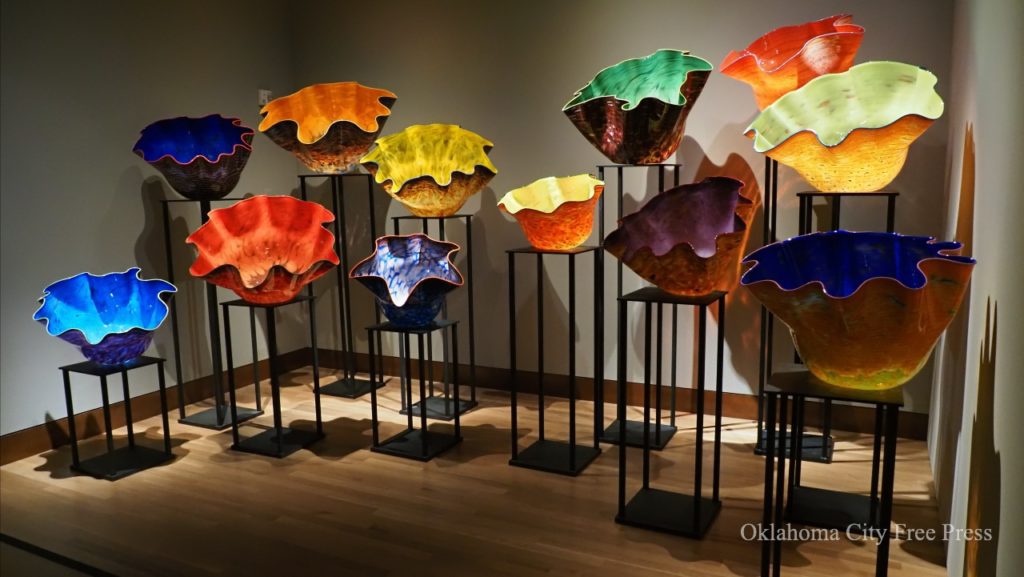
Note: To see a hi-res version of these photos, click on any one of them and scroll through.
Since that time, OKCMOA’s breathtaking collection of Chihuly glass has helped to form not only the aesthetic character of the building, but much of the museum’s artistic identity as well, further encouraging the playful lighting, creative arrangement, and unique showcases and installations for which the institution has become known.
So there is perhaps no more fitting way for OKCMOA to celebrate their 20th year in their location than by expanding and reimagining their Chihuly exhibit with “Chihuly: Then and Now,” a newly reconceived look at the work, life, and inspirations behind the man and the luminous, intricate artworks that bear his name.
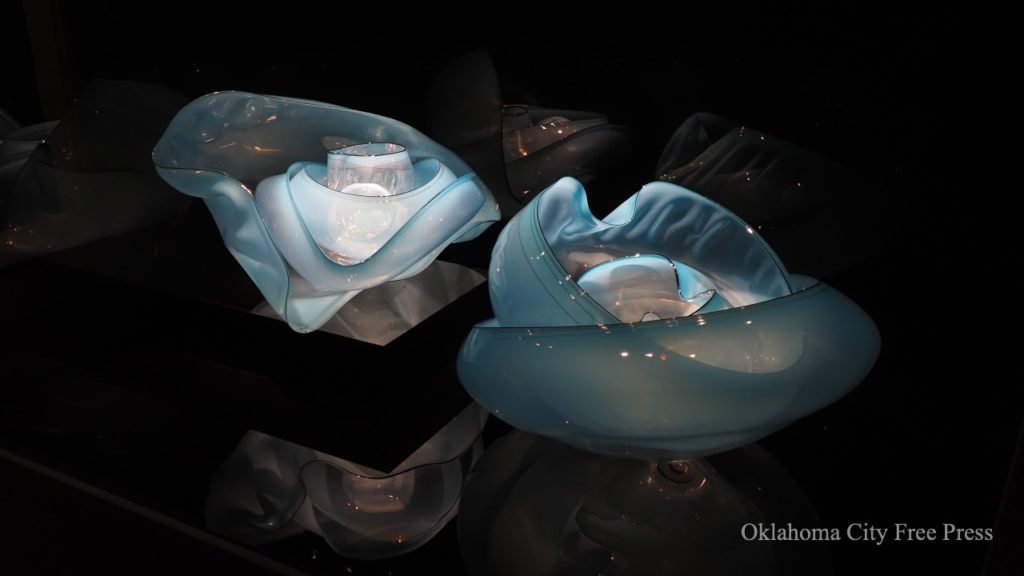
Museum curators, led on this project and exhibit by Catherine Shotick, went to great lengths to accumulate pieces from throughout Chihuly’s entire artistic life, hoping to show off the larger evolution of his work and influences outside the surprisingly narrow window that produced the bulk of the museum’s permanent pieces.
“We have our permanent collection here, the major pieces,” Shotick said, “but then the ones on loan really come in showing some of Chihuly’s earliest works, because he actually started as early as the 1960s.”
Inspiration and Infancy
After the past 20 years of seeing the museum’s permanent collection of Chihuly pieces, practically all of which was created in the 90s, it’s somewhat shocking to see such early work, particularly the “cylinders” that comprise the bulk of the early-period pieces on display.
“He started with what are called ‘hard cylinders,’” Shotick explained. “They’re still very much symmetrical, and the glass still had a sense of functionality where you could think of vases or goblets.”
While these pieces represent much more straightforward and simplistic form, they’re striking for the scribbled, sketchy colors seemingly scrawled around the sculptures, recalling Basquiat-like, haphazard painting.
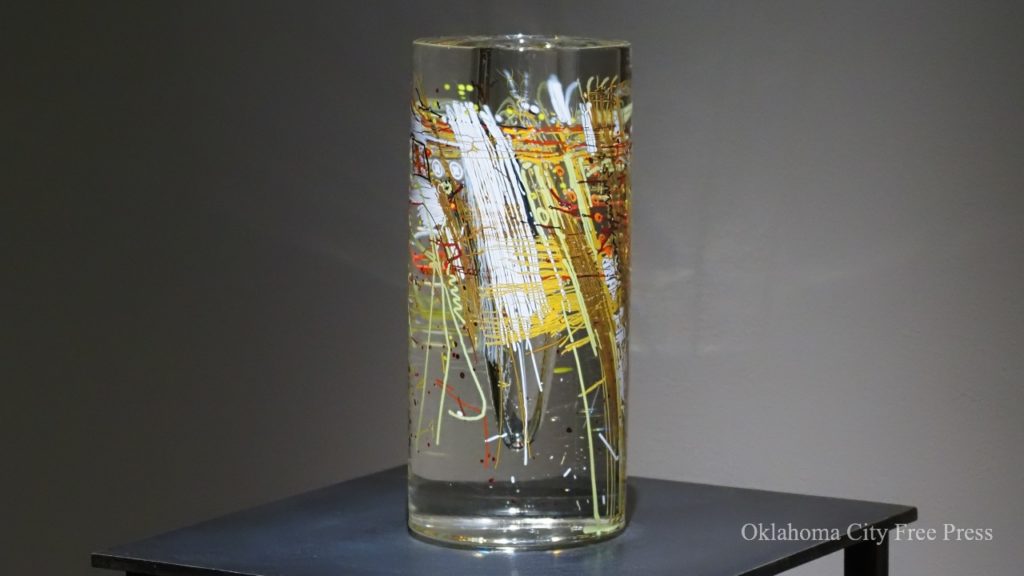
But no matter how paint-like they may appear, with Chihuly, it’s always glass.
“Those are actually made by rolling out these incredibly thin threads of multicolored glass,” Shotick told me. “You lay those threads out and then roll the molten glass over them so that they fuse to the glass. That’s how you get those kinds of Native blanket inspired designs.
The influence of both Native American blanket-making and basket-weaving can be seen arguably throughout Chihuly’s entire body of work, but it’s most clear and obvious in these early works, especially as the museum team has seen fit to collect and display a selection of those real Native items alongside the glass works.
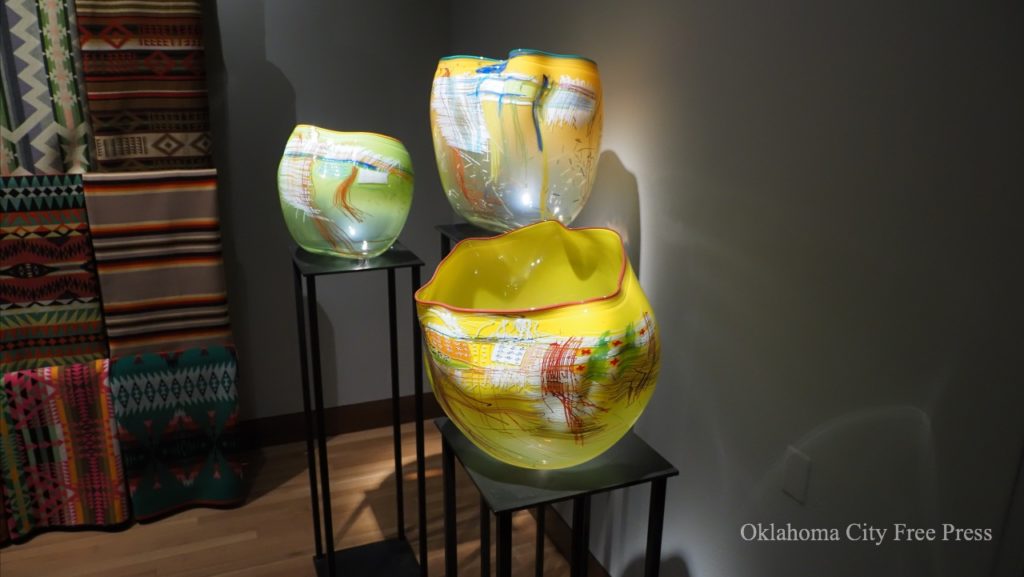
“He was really inspired by the baskets and the kind of slumped forms of basketry and how, when they age, they become not so symmetrical anymore,” Shotick said of the early inspirations that began pushing him away from more traditional glass structures. “He was kind of at the forefront of thinking, ‘why does glass have to be symmetrical? Why can’t we let gravity take its course?’”
Gravity and Grace
Using gravity and naturalistic movement to create a softer, liquid-like form was a groundbreaking approach in the glass world, and the results would inform the majority of the pieces in the museum’s permanent collection.

Familiar visitors will recognize many of the pieces throughout the middle section of the new exhibit as they move through the 80s and 90s eras of Chihuly’s work that produced the trademark folded bowls, warped basket shapes, and nearly organic “ikebana” forms.
Though many of the pieces are indeed familiar, the loose, modular nature of the smaller works means that they are easily rearranged and placed quite differently throughout, and that’s exactly how the longstanding acquisitions throughout the exhibit have been handled.
The beloved installations within the exhibit have been recreated after their big move to their new home on the first floor, but the team has taken care to place and arrange the hundreds of small, individual glass pieces in subtly new ways.
The canoe spilling over with gracefully coiled and wavy glass works is still one of the centerpieces of the show, but the new placement of the numerous sculptures inside the boat seems to evoke a greater sense of width and sprawl, and the iconic backlit ceiling, no longer a hallway, stands on its own, steel beams now holding the pieces overhead, contrasting the cold, blunt metal with the fluid beauty of Chihuly glass.
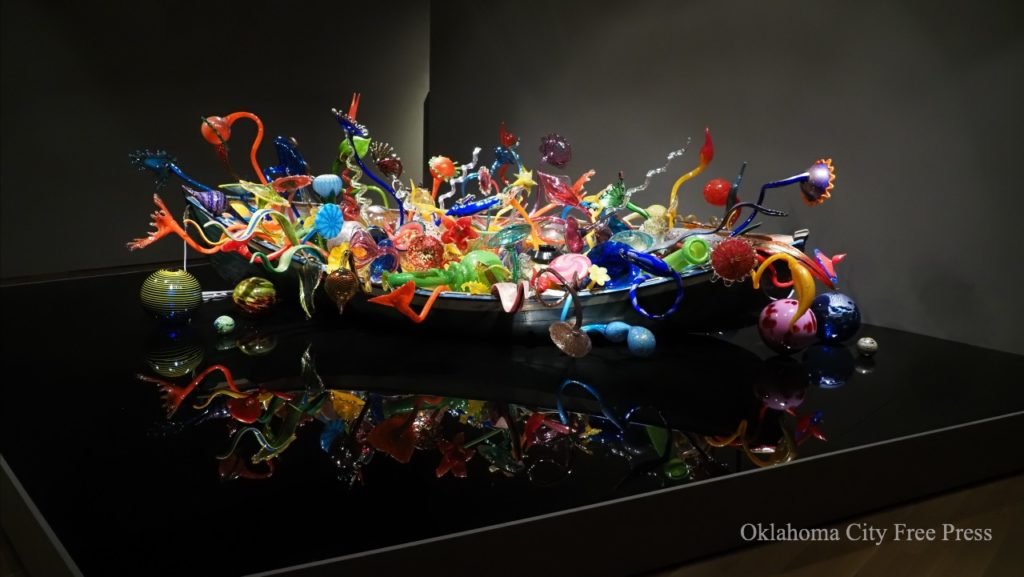
Past and Present
The final room showcases a selection of some of the most recent Chihuly works, including a couple displays in his classic basket style created just last year, exploring a lace-like pattern on the glass.
The most awe-inspiring pieces in the room, however, are the “Rotolo” sculptures of braided, intertwining coils of glass that appear to be frozen mid-fall, and the notably different “glass-on-glass” wall displays showcasing enamel-painted panels layered atop one another to create a new sense of depth and dimension.

These works are so new, in fact, that they’ve provided OKCMOA with a notable first.
“We are actually the first institution to acquire a glass-on-glass piece into our collection,” Shotick said. “And just yesterday, the board approved acquisition of two large painted pieces on display in the lobby, the ikebana diptych from his “Burned Drawings” series.”
The addition, however temporary, of these pieces from throughout Chihuly’s greater life and career offers visitors the chance to see a more curious and experimental side to the mind that created so much of the aesthetic and artistic identity of our hometown museum. “Then and Now” is a retrospective of an artist pushing his own vision while pushing the perceived limits of his medium, even now, as he enters his eighth decade.
Who knows what the exhibit might contain 20 years from now?
“Chihuly: Then and Now” at OKCMOA opens to the public Saturday, June 18th.
For schedules, tickets, and more information, visit okcmoa.com.
Feature photo courtesy of Oklahoma City Museum of Art
Brett Fieldcamp has been covering arts, entertainment, news, housing, and culture in Oklahoma for nearly 15 years, writing for several local and state publications. He’s also a musician and songwriter and holds a certification as Specialist of Spirits from The Society of Wine Educators.
